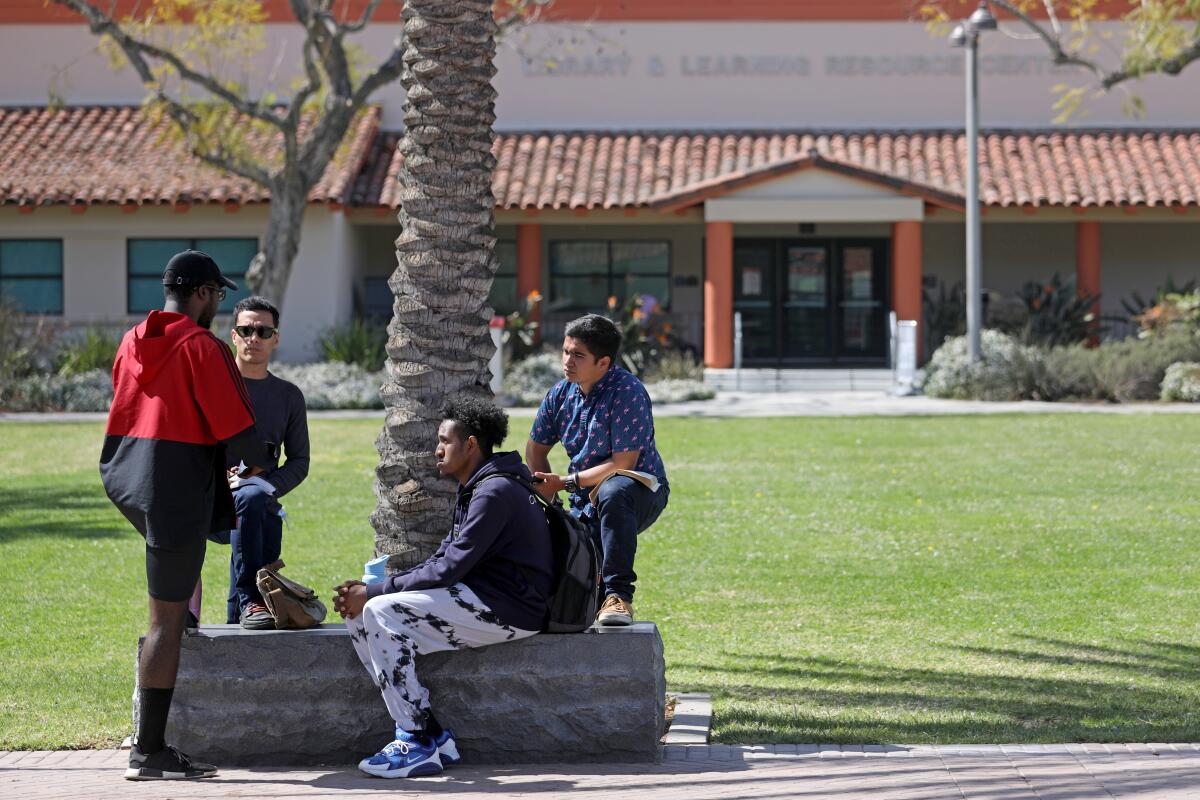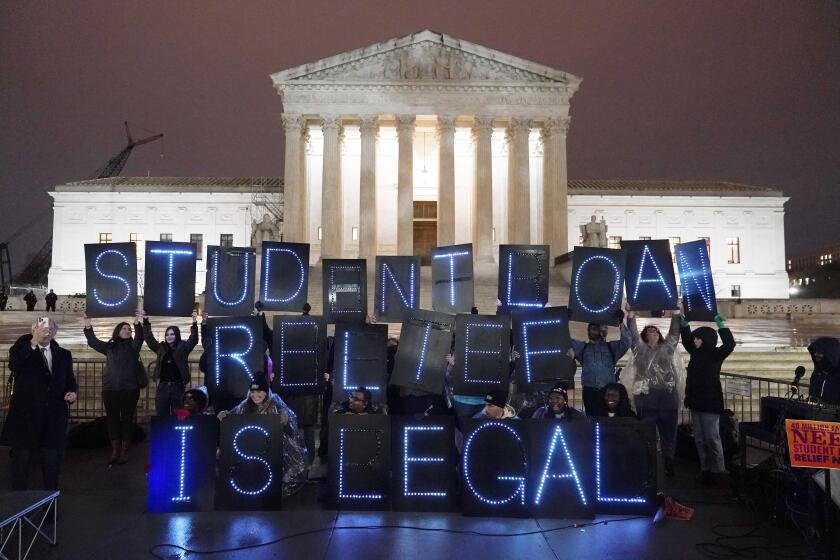Free money for job training is still available to Californians â if you act now

Before the pandemic, Jose Rubio had been pursuing an environmental engineering degree while also working in construction and performing music. Once COVID-19 struck, he lost his job and couldnât afford to continue at Sierra College near Sacramento.
In 2021, California established the Golden State Education and Training Grant Program, providing one-time grants of up to $2,500, aimed at helping people such as Rubio. And it did: Rubio applied, got a grant and is continuing his education.
But now, Californians have just days â until Thursday â to apply for these grants because budget shortfalls have led lawmakers to propose slashing the available funding, as first reported by CalMatters.
Hereâs what you should know.
Who is eligible for the job training grant?
You are eligible if:
- You are enrolled at one of 110 approved institutions. You will not be eligible if you were enrolled at the time you lost your job.
- You can verify that you were unable to find work at the same or better wages as your pre-pandemic job.
- You earn less per year than the income limits set by the state, which range from $42,800 for a single person with no dependents to $135,000 for someone with six or more dependents.
- Your parents have less than $90,400 in household assets if you are dependent on them. The same limit would apply if you are independent and have dependents other than a spouse. If you have no dependents, the limit is $43,000.
California will soon require Medi-Cal recipients to prove their eligibility again. But it has a safety net for people who lose their coverage.
How can I apply for the job training grant?
Register as a first-time user on the Golden State Education and Training Grant Application. Registration includes filling out your Social Security number or Dream Act ID, student email and other personal information.
Once you finish registering, your application is complete. You do not need to complete the Free Application for Federal Student Aid or the California Dream Act application for this program.
With this eight-week newsletter course from the Los Angeles Times, assistant editor Jessica Roy will help you get a handle on your money stuff.
What led to the cuts and deadline?
Gov. Gavin Newsomâs budget proposal decreases the allocation for this program to $20 million, from $500 million, due to lower revenue projections and an increased budget deficit of approximately $31.5 billion.
The $480-million cut from the program would be returned to the state by the end of the 2022-23 fiscal year, according to the governorâs latest proposal. The decision on the proposed grant cut will be made by June 15, which marks the constitutional deadline for the Legislature to approve the budget. The budget committee in the Assembly and a key subcommittee in the Senate have signaled they accept the governorâs proposal.
Nearly 8,000 grants totaling $19 million have been awarded as of early June, out of more than 11,000 applications, said Shelveen Ratnam, a spokesperson for the California Student Aid Commission. Officials had expected to award 190,000 grants.
The Legislative Analystâs Office wrote in February that the âunderlying need for [the] program has diminished,â due to significantly improved unemployment rates.
During April, Californiaâs unemployment rate stood at approximately 4.5%, a significant decrease from the 7.5% rate in July 2021, when the program was established.
The analyst report added that, âbecause the labor market has been very favorable for people looking for jobs, displaced workers are more likely to have the option to find other jobs rather than returning to school.â
The federal government plans to forgive up to $20,000 in student loan debt for millions of Americans. Hereâs everything you need to know.
How the grants help people
Rubioâs life changed when he was awarded $2,500. The grant covered his travel expenses to school, allowed him to acquire a new backpack after years of using the same one, and ensured he had enough food. Beyond the financial support, the grant instilled in him a sense of confidence â reaffirming that someone facing circumstances similar to his can seize the opportunity to pursue an education.
âCutting [the program] shatters peopleâs dreams to accomplish their academic success,â Rubio said. âItâs not fair because I feel that if I received it, other students should get a shot as well, because only I know how much it helped me.â
Rubio graduated last month and hopes to transfer to a University of California campus in the fall.
Adding someone to your credit card account as an authorized user is a great way to help them build credit.
What other options do displaced workers have to fund their education?
Displaced workers have other options too.
- Community colleges offer free non-credit adult education courses and provide full tuition waivers for qualifying students taking credit courses.
- Students can submit applications for FAFSA or the California Dream Act before Sept. 2
- Students may also be eligible for Pell Grants and Cal Grants, which can help cover education and living costs. Yet, these grants typically have a maximum duration of four to six years, and some workers may have already exhausted their eligibility for financial aid benefits.
The California Student Aid Commission is actively working to implement the Cal Grant Equity Framework, a model adopted last year, that aims to enhance student access to financial aid. The framework is currently under consideration for the 2024-25 state budget and if implemented, more students would receive Cal Grants. The current Cal Grant system employs outdated eligibility criteria, such as age and time since high school graduation, Ratnam said.
âLonger term, the commission is working with policymakers to further expand access to Cal Grant programs in ways that would make it better serve the needs of specifically adult and returning learners,â Ratnam said.
Deciding how to spend your first paycheck after graduating from college can be overwhelming, given the many competing demands on it.
More to Read
Sign up for Essential California
The most important California stories and recommendations in your inbox every morning.
You may occasionally receive promotional content from the Los Angeles Times.
















